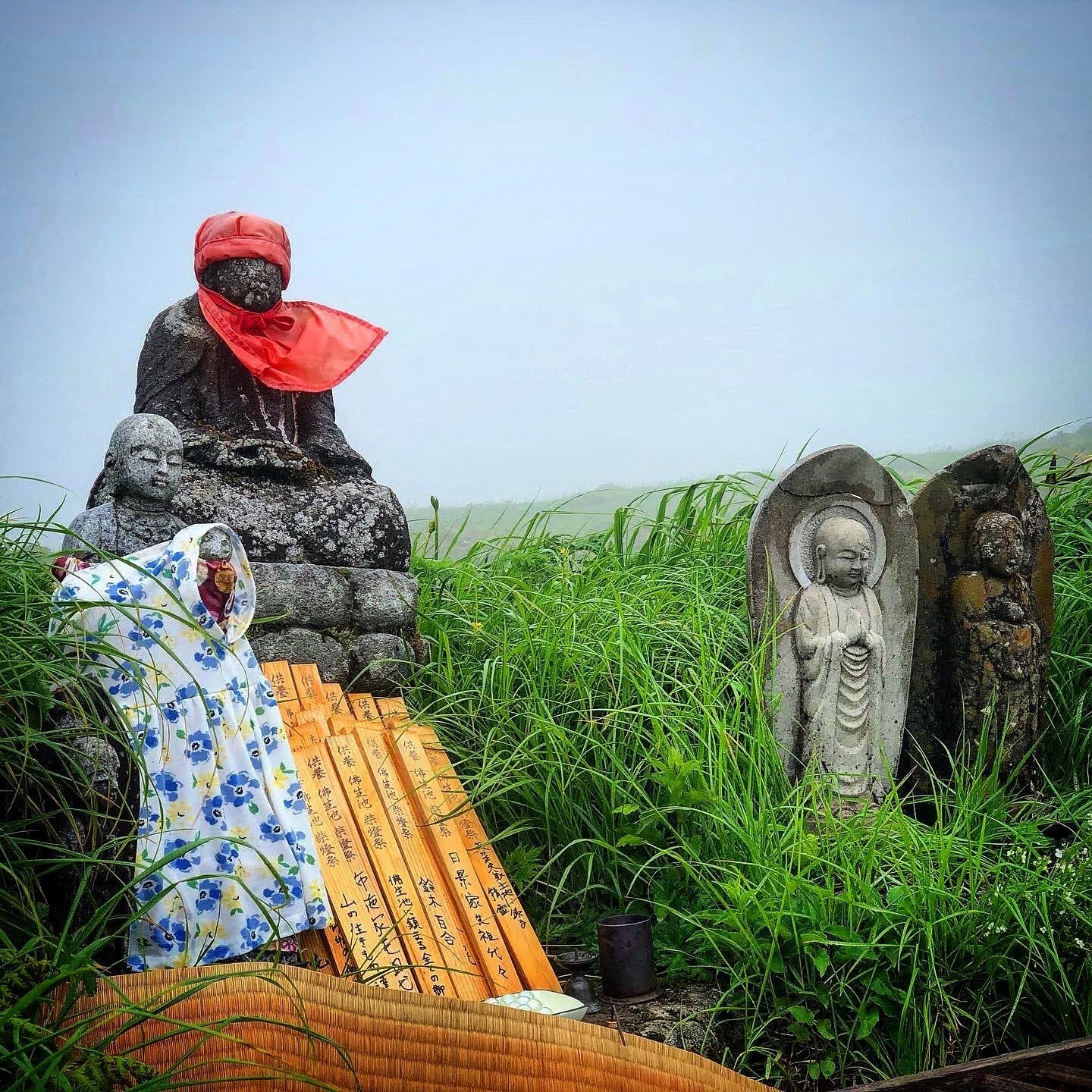Why do Yamabushi do Yamabushi Training?
To do yamabushi training, naturally.
Kia ora Koutou, Tim Bunting Kiwi Yamabushi here bringing you concepts, life advice, and hiking guides straight from the mountains of Japan.
Why do yamabushi do yamabushi training?

Why do writers write?
Why do readers read?
Why do cooks cook, swimmers swim, hikers hike, truckers truck or livers live?
All these questions have the exact same answer:
We do these things to do these things. And perhaps discover a little something about ourselves in the process.
However, ask Master Hoshino why yamabushi do yamabushi training and he will give you the most annoying yet simultaneously insightful answer known to man:
'Yamabushi do yamabushi training to do yamabushi training’.
And he’s right.
Yamabushi gotta Yamabushi.
Do you remember when I told you about The Badass Buddha Fudomyo’o, and his connection to yamabushi? More specifically, do you remember the ceremonial blue and white checkered Suri we wear?
Well, we wear this during the Akinomine, the Autumn’s Peak Ritual.
The Akinomine is a yamabushi initiation ritual to become an official yamabushi. That, or to maintain your yamabushiness for at least one more year.
And it’s on next week.
Strictly speaking, the ’the’ part is a bit incorrect. It should be Akinomines.
There are two.
Long story short, the Dewa Sanzan mountains are home to two major schools of Yamabushi, each with their own Akinomine ritual: The Shinto Dewa Sanzan Jinja (Shrine) Akinomine (that I take part in), and the Buddhist Akinomine run through Shozen’in Koganedo Temple (more on that in this video).
Either way, if you want to call yourself a yamabushi, this is what you do (well, women either do the Buddhist version, or the confusingly-named Miko Shugyo in September).
The Akinomine is how yamabushi yamabushi. Officially, at least.
What do yamabushi do during the Akinomine?

An integral part of being a yamabushi is that we pray for others. During the Akinomine, yamabushi essentially spend one whole week living and breathing the Dewa Sanzan mountains. We visit any number of sacred areas and perform secret rituals in what is essentially a giant prayer for the souls of the ancestors, a quick recovery for places affected by natural disasters, and a good harvest.
Oh, and world peace, of course.
And this year, for the first time in four years, Dewa Sanzan Jinja won’t just be running their training alone. This year, for the first time in four years, they are letting Satoyama yamabushi (yamabushi not from the direct vicinity) in as well.
Like me.

Since 2020, for reasons that don’t need stating, only the ceremonial aspects of the Akinomine have been performed by Dewa Sanzan Jinja. The ceremonial aspects that need to be completed pandemic or otherwise.
So for the past four years, like the rest of you, we Satoyama yamabushi have been waiting patiently at home, holding our breaths for the next chance to blow our conches in the Dewa Sanzan mountains.
And let me tell you, we are getting pretty red in the face.
Like a Tengu.
Or a sunburnt Kiwi Yamabushi.
In normal years, the Dewa Sanzan Jinja Akinomine features well over 150 yamabushi from all manner of backgrounds, including a few from overseas. This year, however, they are taking the cautious approach: splitting the number of yamabushi essentially in half. This year, only 80 yamabushi will be able to take part.
Like Me.
I was one of the extremely fortunate few to be chosen to take part in this year’s Akinomine. Something I won’t take for granted and am extremely grateful for as I know others weren’t as lucky.
This time next week I will be in Daishobo pilgrim’s lodge getting ready to embark on yet another journey into the wilderness that is the Dewa Sanzan mountains.
This time next week, I will be given the chance to yamabushi.
Officially, at least.
You don’t really need permission to yamabushi. You do it for the sake of doing it. Neither do you really need permission to write, read, swim, hike, truck,
or live, for that matter.
P.S. You can join in the festivities

If you get the chance, definitely make tracks to Haguro-san around the last week of August.
Bells ringing, sticks stamping, conch shells blaring, chants echoing, on the 26th of August each year there is a long parade of yamabushi going up the stone stairway of Haguro-san.
Then on the 31st is the Hassaku-sai, the Hassaku Festival, one of the fiercest bonfire festivals around with all the chanting and ruckus we yamabushi produce when reporting the results of our training to Prince Hachiko, the ‘founder’ of the Dewa Sanzan.
Finally, on September 1st we make our way slowly back down Haguro-san, singing all the way. A definite must-see for lovers of traditional Japanese culture.
NEW VIDEO: The Crazy Legend of Mt. Chokai’s Shape
This was really intriguing to learn about! A short but fun video for you.
Daily Yamabushi for this Week
Read Daily Yamabushi for free at timbunting.com/blog, or check out the posts as YouTube Shorts here.
This week’s blog posts were:
Mountains of Wisdom: Tell Your Mum!

Thanks for reading! If you think your mum would enjoy this, go ahead and share it with her!
Better yet, refer her and two of her friends to get a free month membership!
As always, get more content on the little-known side of Japan and Japanese culture on my blog, YouTube, Instagram, Facebook, Twitter, LinkedIn, or Threads.
And for those of you who haven’t:
Ka kite ano.
Tim.




